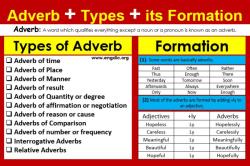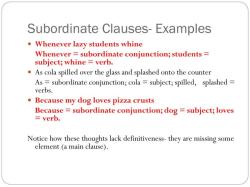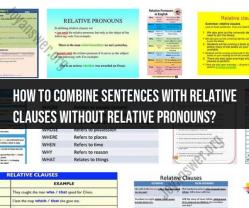What are the types of subordinate clauses?
Subordinate clauses, also known as dependent clauses, are groups of words that have a subject and a verb but cannot stand alone as complete sentences. Instead, they rely on an independent clause to form a complete thought. There are several types of subordinate clauses, each serving a different purpose in a sentence. Here are some common types:
Noun Clauses:
- Function as nouns within a sentence.
- Example: What she said surprised me. (Noun clause serves as the subject.)
Adjective (Relative) Clauses:
- Modify nouns in the main clause, providing additional information.
- Example: The book that she recommended is excellent. (Adjective clause modifies the noun "book.")
Adverbial Clauses:
- Function as adverbs, modifying verbs, adjectives, or other adverbs in the main clause.
- Example: He ran fast because he was late. (Adverbial clause modifies the verb "ran.")
Time Clauses:
- Indicate when an action takes place.
- Example: After she finished her work, she went for a walk. (Time clause indicates when she went for a walk.)
Place Clauses:
- Indicate where an action takes place.
- Example: They found the treasure where the map indicated. (Place clause indicates where they found the treasure.)
Reason Clauses:
- Indicate why an action occurs.
- Example: She stayed home because she was not feeling well. (Reason clause indicates why she stayed home.)
Purpose Clauses:
- Indicate the purpose or intention behind an action.
- Example: She went to the store to buy some groceries. (Purpose clause indicates the purpose of going to the store.)
Result Clauses:
- Indicate the result or consequence of an action.
- Example: So that they wouldn't get lost, they used a map. (Result clause indicates the result of using a map.)
Contrast Clauses:
- Indicate a contrast or opposition to the main clause.
- Example: Although it was raining, they went for a walk. (Contrast clause indicates the contrast with the action of going for a walk.)
Condition Clauses:
- Present a condition that must be met for the main clause to occur.
- Example: If you finish your homework, you can go out. (Condition clause presents the condition for going out.)
These types of subordinate clauses add complexity and nuance to sentences by providing additional information, modifying elements, or introducing conditions. Understanding the different types of subordinate clauses can help you construct more varied and sophisticated sentences.
What are the various classifications of subordinate clauses?
Subordinate clauses, also known as dependent clauses, are groups of words that function as a part of a sentence but cannot stand alone as a complete sentence. They are typically introduced by subordinating conjunctions, such as "because," "although," "if," "when," "since," and "until." Subordinate clauses can be classified into several different types based on their function within the sentence.
Noun clauses: Noun clauses act as nouns within a sentence. They can function as the subject, direct object, indirect object, object of a preposition, or predicate nominative.
Adjective clauses: Adjective clauses modify nouns or pronouns. They are typically introduced by relative pronouns, such as "who," "whom," "whose," "which," "that," and "where."
Adverbial clauses: Adverbial clauses modify verbs, adjectives, or other adverbs. They indicate time, place, manner, cause, condition, concession, purpose, or result.
Relative clauses: Relative clauses are a type of adjective clause that provides additional information about a noun or pronoun. They are introduced by relative pronouns, such as "who," "whom," "whose," "which," "that," and "where."
How do subordinate clauses differ in their roles within sentences?
Subordinate clauses differ in their roles within sentences by serving different grammatical functions. Noun clauses function as nouns, adjective clauses modify nouns or pronouns, adverbial clauses modify verbs, adjectives, or other adverbs, and relative clauses provide additional information about a noun or pronoun.
Noun clauses: Noun clauses typically replace nouns in a sentence and answer questions like "who," "what," "when," "where," and "why."
Adjective clauses: Adjective clauses provide more details about the noun or pronoun they modify and answer questions like "what kind," "which," "how many," and "whose."
Adverbial clauses: Adverbial clauses modify verbs, adjectives, or other adverbs and answer questions like "when," "where," "how," "why," "if," and "because."
Relative clauses: Relative clauses provide additional information about the noun or pronoun they modify and are introduced by relative pronouns.
Are there specific grammatical structures defining different types of subordinate clauses?
Yes, there are specific grammatical structures that define different types of subordinate clauses. These structures include the use of subordinating conjunctions, relative pronouns, and verb tenses.
Noun clauses: Noun clauses are typically introduced by subordinating conjunctions such as "that," "if," "whether," "why," "how," and "when."
Adjective clauses: Adjective clauses are typically introduced by relative pronouns such as "who," "whom," "whose," "which," "that," and "where."
Adverbial clauses: Adverbial clauses are typically introduced by subordinating conjunctions such as "because," "although," "if," "when," "since," "until," "as," "while," and "so."
Relative clauses: Relative clauses are introduced by relative pronouns and follow a specific grammatical structure that includes a head noun or pronoun and a relative pronoun.










